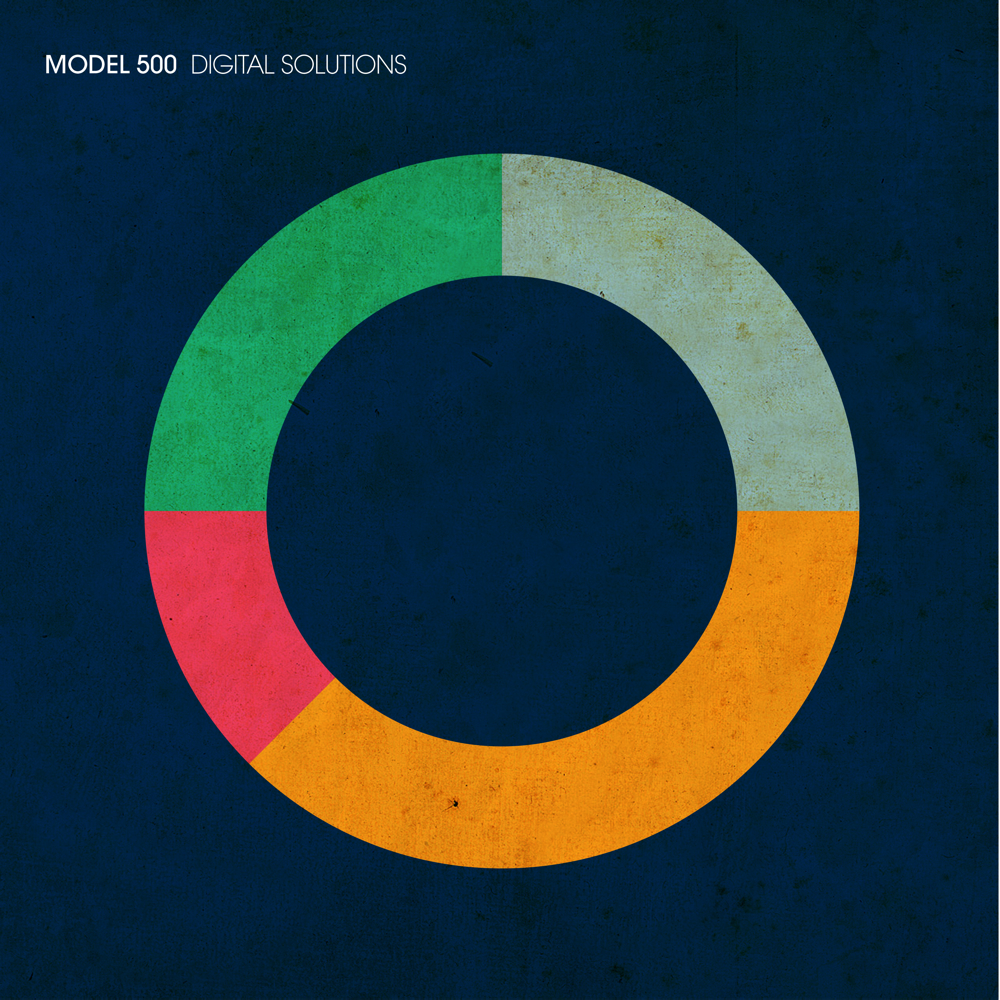Model 500 Digital Solutions
Detroit techno pioneer Juan Atkins has updated a classic formula—only slightly—on the first new Model 500 album in more than 15 years.

The name Model 500, even when wrested from its context as a legendary pillar of electronic music in Detroit, prompts an inescapable comparison to a car. Juan Atkins‘ automotive alias is 30 years old now, and, like the silhouette of the saloon that the pseudonym evokes, it has become more iconic over time. A lot of artists who make music for more than three decades tend to shift with the tide as the years roll on, but the Model 500 sound hasn’t changed all that much. As a result, it’s become something of a design classic—something that’s so distinctive, most people wouldn’t dare copy it. The music is instantly recognizable, too: prickly melodies found on songs such as “No UFO’s” and “The Chase” skitter and dart on top of superheated snares, hi-hats, and many other small but distinguishable pieces. Its chassis is techno and electro, but the moving parts under the hood are pure funk. Most of Atkins’ records are also notable—never moreso than now—for their sparing use of bass. Model 500 is, in every sense, a high-end machine.
There’s a song on Model 500’s latest album, Digital Solutions—which features additional production from Mike Banks of Underground Resistance—that puts this last aspect into stark relief. “Encounter” is, essentially, a dubstep record without the bass—in fact, it’s been completely scooped out, and replaced with a gaseous modular facsimile of that unmistakable “womp-womp-womp” sound. It’s an unusual track, and recognizably Model 500-ish only for its spindly keys and sharp acid accents. However, it’s by no means the only tune-up to Atkins’ formula on Digital Solutions. “Storm” is remarkably smoothed-down slice of techno that sounds more like a Hard Wax white label than a Metroplex 12″ (Digital Solutions, incidentally, is the first Model 500 album Atkins has released via his Metroplex label), while “Groove,” which follows immediately after, has a guitar solo. These are incremental, but noticeable, advances on Atkins’ tried-and-tested template.
Do these deviations work? By disgorging it of its low-end frequencies, “Encounter”—if it is intended as a Model 500 take on dubstep—seems to misunderstand the basic principle behind what makes the genre enjoyable. Elsewhere, however, Digital Solutions absorbs its aesthetic updates with ease, refreshing Atkins’ signature electro sounds in the process. “Hi NRG,” the album’s first track, pulls off the neat trick of sounding both generously proportioned and streamlined: processed human voice chords swell in the midsection; junky metal percussion loosely clicks and clacks, mimicking a bongo drum; digital harpsichord notes skip lightly over the top; and a keyboard funk solo oozes through the gaps. Like “Storm,” it’s a techno record that packs a punch, but the delivery is marked by finesse.
Still, a lot of Digital Solutions echoes classic Model 500 material. “Standing in Tomorrow”‘s sweeping synths and compressed vocoder vocal are customary Metroplex sounds, but they glow with a newfound affluence (amplified perhaps by a more elaborate studio set-up than the ’80s and ’90s allowed); “Control,” which first appeared on an R&S EP in 2012, is much the same, and it buttresses Digital Solutions nicely. Elsewhere, some of the album’s most charming moments are found in its more barren synth-and-snare stretches. “Electric Night”‘s milieu of soft nocturnal bleeps and Atkins’ deadpan delivery resembles the ambling atmosphere—but not the downcast mood—of The Other People Place’s Lifestyles of the Laptop Cafe. Made of little more than a rubbery oscillating bassline, a few dribbling bleeps, and Atkins’ intoning of the song title, “Digital Solutions” is engineered in the same way. Even for an album of electronic music, the track’s strange onomatopoeic burps and clicks have a particularly synthetic sheen to them.
Atkins and other Detroit pioneers ensured their place in the electronic music canon years ago, but these sort of comebacks often put notions of legacy and “flawless catalogs” at risk. Despite that, Digital Solutions is worthy of its place in the Model 500 discography. The fact that the LP even exists—and that people are excited to hear it—reinforces the music’s enduring power, even if the record largely sets aside aspirations to be innovative. The future Atkins once envisioned more than three decades ago is now here; Digital Solutions is a welcome reminder of that.

